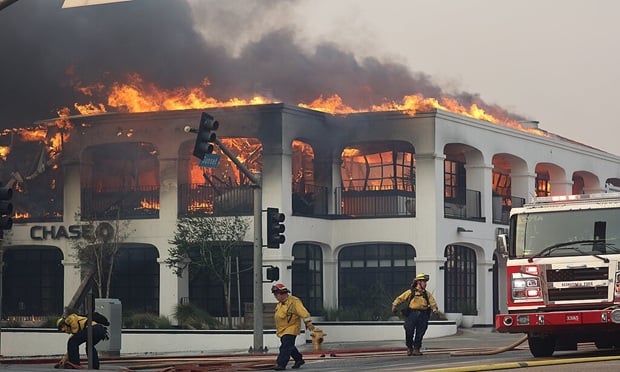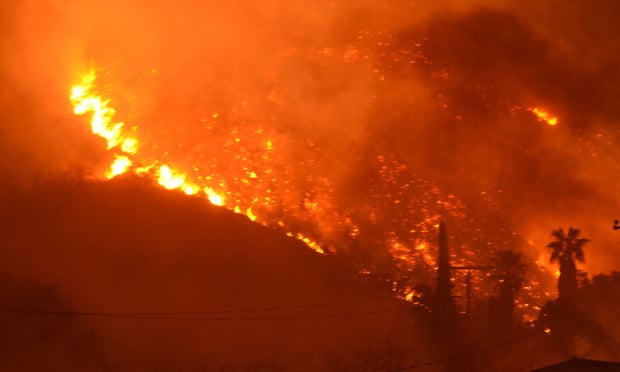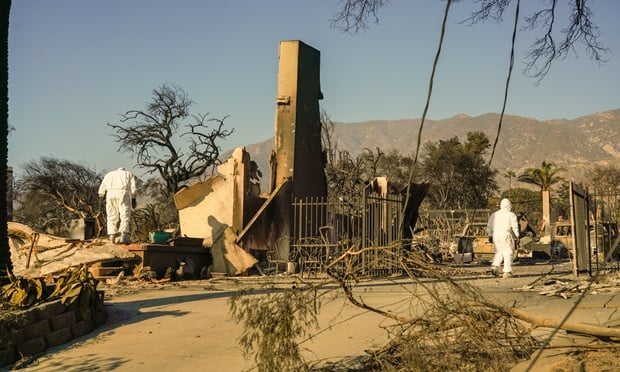(Bloomberg) -- Craig Reeves had been in Rockport, Texas, barely 48 hours when he ducked into the gloomy threshold of the condominium, which was darkened by blinds pulled before Hurricane Harvey and filled with a humid, mildewy funk.
Reeves, a catastrophe claims adjuster for State Farm, crunched over glass shards in his steel-toed boots, stepping over a wet towel, a bottle of Febreze and a copy of Henry David Thoreau’s “Walden.” He made his way past the kitchen, its cupboard doors curling, and into the living room with its soaked teddy bear, upended sewing machine, dog kennel and deck chairs. Reeves lifted the shades, letting in the sunlight that would help him take account of the destruction of Jeannie Jurischk’s home.
Related: Returning home after Hurricane Harvey
Adjusters are on the front lines
Hurricane Harvey inflicted damage on 1.7 million homes that could top $11.5 billion in insured losses, according to CoreLogic Inc., and workers like Reeves are on the front lines. State Farm, the biggest private home and auto insurer in Texas, alone had 32,500 property claims to handle as of Monday. It deployed more than 1,000 adjusters to the Gulf Coast, and erected a disaster tent, portable toilets and a satellite-equipped recreational vehicle along the freeway in Corpus Christi, 30 miles (48 kilometers) from Rockport.
While the outside world sees storms as televised tableaux, adjusters like Reeves focus on the minutiae of destruction, from water stains and mold specks on a ceiling to a roof sheared off to a concrete pad where a single house once stood. Adjusters are often reconstruction’s harbingers, and they witness communities reeling and people at their frailest.
“Everything that you’re involved with is destruction and bad times,” Reeves said. “There’s no break from it.”
Uninhabitable homes
Rockport, near where Harvey made landfall Aug. 25, is a fishing village that also attracts tourists and retirees, some who live in million-dollar homes along a pristine marina. This weekend, though, the town was without electricity and water, and many residents lacked any shelter. Jurischk’s condominium unit was just the first of about 50 cases handed to Reeves after his 1,200-mile drive from Silvis, Illinois. Nearly all of his cases involved homes rendered uninhabitable.
On Saturday, he met Jurischk for the first time outside, where concrete tiles, stucco siding and nails littered the lawn. The swimming pool was filled with brown water, and towering heaps of downed oaks had limbs snapped like toothpicks.
Related: 5 things to know about insurance coverage after Hurricane Harvey
“Do you live here?” Reeves asked as the woman with cropped blond hair, black shorts and yellow flip-flops walked up.
“Well, I used to,” Jurischk replied.
In the next two hours, Reeves would reduce the condo’s sodden disarray to a tidy rendering in red ballpoint ink, a cache of digital photographs, a to-do list and a reassurance that this, too, shall pass. Later, he would spend hours uploading his findings into a computer to calculate the number that homeowners care about most: the sum the insurance company owes them.
Reeves, 39, popped his red pen out from underneath his red State Farm ball cap and took up a clipboard with a pad of graph paper.
“Have you been upstairs yet?” he asked Jurischk. They walked up the beige carpeted steps covered in glass and leaves. He whipped out his Bosch laser measure and ran its red light over her bedroom, took photos with his iPhone and sketched the floor plan.
3-dimensional computer models
Later, in his company-issued van, he would turn that data into a three-dimensional computer model. That would be the basis for estimating damages and “adjusting” the homeowner’s claim.
The white Ford Transit is Reeves’s mobile office, complete with a swivel chair, desktop and laptop computers, a printer, rubber and roofing boots, hip waders, a cooler stocked with Gatorade, a bag of beef jerky, two bottles of bug spray, and, for the rare slow moments, two fishing poles.
“You don’t know what to prepare for,” Reeves said
Related: Harvey cold reshape how and where American build their homes
Hurricanes as large as Harvey defy most preparations. At first, Jurischk, who grew up in coastal Port Arthur, assumed she would easily ride out the storm. But as the hurricane grew, she packed in a bag four pairs of shorts, four tank tops and three pairs of flip flops — her habitual beach attire. She headed to Pearland, a Houston suburb, where her daughter had a friend who took them in, along with two dogs and a cat.
There was no respite. By Monday, Houston was flooding. Jurischk and her daughter were rescued at 11 p.m., carried out in the back of a dump truck. They took shelter at a recreation center, then Pearland High School and then were bused almost 200 miles north to Belton. There, they rented a car and made their way back to Rockport, where they would stay with friends.
Jurischk broke down crying.
“They’re mostly happy tears,” she said. “I just think we had so many blessings.”
She was hoping for one more.
Finding shelter
“I’ve got to find housing,” Jurischk said. “We’ll see what Craig has to say, and what my options are. I don’t know, it’s like trying to figure out what’s ...” Her words trailed off as she touched her bedding. “It’s wet. You can feel it here.”
“We’re gonna start working our way down the steps, ma’am,” Reeves called out.
She walked by a bookshelf lined with seashells and stocked with titles including “14,000 Things to be Happy About.”
“I don’t know where to start getting this place cleaned up,” she said. “I don’t even know where to begin.”
'Hard for everybody, very emotional strain'
After two hours, Reeves wrapped up his investigation. Sweat dripped from his brow and his shirt was damp. Although Reeves had worked most of the last decade’s monster storms — Katrina, Sandy, Matthew — Harvey’s enormity was only beginning to sink in.
Related: Staying safe: A Hurricane Harvey survival guide for claim adjusters
“This is hard for everybody, but for us too, it’s a very emotional strain,” he said.
Reeves grew up near Bloomington, Illinois, the corporate headquarters for State Farm, which got its start nearly a century ago as an auto insurer for farmers. Reeves’s grandmother worked for the company as a roller-skating office clerk. While in junior high, Reeves’s home burned to the ground, and State Farm helped the family find temporary housing.
“I’m not unfamiliar with losing everything you’ve got,” he said.
In 1999, his first job at State Farm was dealing with property lost in house fires. When Hurricane Katrina struck in 2005, he was deployed for the first time as a catastrophe claims adjuster. Since then he’s been sent to dozens of disasters. At home, where he left his wife and their 3-week-old baby, he keeps a bag packed since he’s often deployed with less than a day’s notice.
In Jurischk’s living room, she and her daughter gathered around him, hanging on every word.
'We'll move forward from here'
He explained that while the walls appeared salvageable, the ceilings would have to be pulled out and replaced. The carpet, while it didn’t get too wet, was embedded with glass. They should make lists of what personal belongings were salvageable. Clothes should be dry-cleaned before being discarded, and they were to send the bill to him. The biggest question Jurischk had was where would they stay and how long would all this take?
“I’m gonna start building up an estimate,” Reeves said. “We’ll move forward from here.”
Want to continue reading?
Become a Free PropertyCasualty360 Digital Reader
Your access to unlimited PropertyCasualty360 content isn’t changing.
Once you are an ALM digital member, you’ll receive:
- Breaking insurance news and analysis, on-site and via our newsletters and custom alerts
- Weekly Insurance Speak podcast featuring exclusive interviews with industry leaders
- Educational webcasts, white papers, and ebooks from industry thought leaders
- Critical converage of the employee benefits and financial advisory markets on our other ALM sites, BenefitsPRO and ThinkAdvisor
Already have an account? Sign In Now
© 2025 ALM Global, LLC, All Rights Reserved. Request academic re-use from www.copyright.com. All other uses, submit a request to [email protected]. For more information visit Asset & Logo Licensing.








